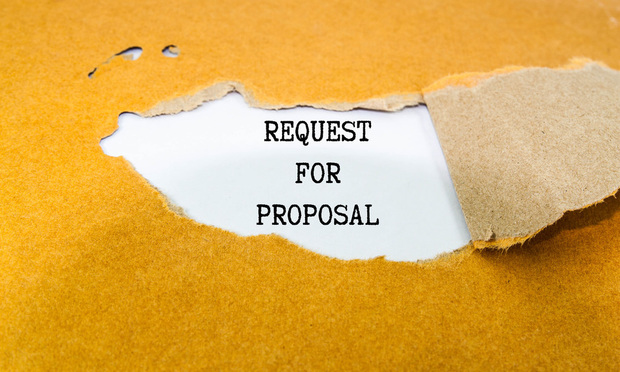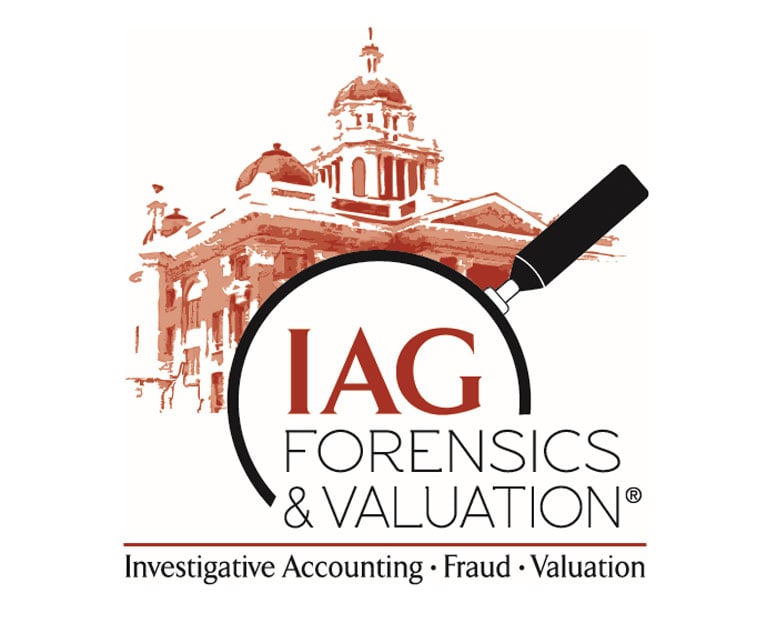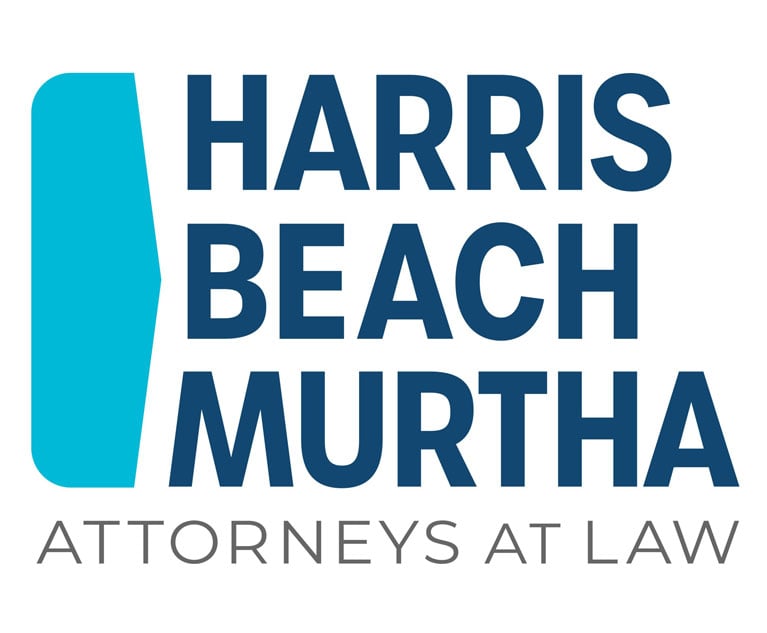A Better Way to Pitch for Business
What truly stands out in today's competitive market? Hint: It's not about legal bona fides or your resume.
June 26, 2018 at 11:30 AM
6 minute read
 EDITORS NOTE: This is an excerpt from Lean Adviser Legal, a new program from Law.com with more than 150 lessons, tools and videos to help lawyers deliver better outcomes, improve efficiency and boost client satisfaction. Learn more. It was spring. The scene was a beauty parade. Law firm contestants took their turns before an interview panel of three. They were the general counsel, another in-house lawyer, and a vice president from the business. Successive presentations highlighted expertise, attitude, and depth of resource. Each firm was polished and highly capable. That's how they got to the final, in-person round. Then something unusual happened. One of the contestant law firms had a different approach. The lawyers talked about the assignment as a project, and their presentation broke it into two segments. For each segment there was a separate campaign. For each campaign, Anticipated Ranges of Outcome (ARO) were discussed, resources were analyzed, and then possible strategies were suggested. The law firm had questions, lots of them. By now the presentation had become a workshop. There was a clear structure and the topics had a natural flow. There were slides on planning, followed by others on execution, then came monitoring, evaluation, correction, and improvement. It was detailed and yet profoundly simple. The VP recognized some of the terminology from a Strategic Management course she had taken. But other terms were strange and there were some acronyms that none of the interviewers had previously encountered. All the while, certain themes kept recurring: effectiveness, efficiency, elimination of waste, and reliability. It dawned on the GC that all of the candidate firms could do the work, maybe the real question was how they'd do it. The GC noticed that the lawyers hardly mentioned their firm or even themselves, just the project. Everything was focused on the project. When the GC commented on this fact, we told him of our approach to the delivery of legal services. We called it Lean Law.
EDITORS NOTE: This is an excerpt from Lean Adviser Legal, a new program from Law.com with more than 150 lessons, tools and videos to help lawyers deliver better outcomes, improve efficiency and boost client satisfaction. Learn more. It was spring. The scene was a beauty parade. Law firm contestants took their turns before an interview panel of three. They were the general counsel, another in-house lawyer, and a vice president from the business. Successive presentations highlighted expertise, attitude, and depth of resource. Each firm was polished and highly capable. That's how they got to the final, in-person round. Then something unusual happened. One of the contestant law firms had a different approach. The lawyers talked about the assignment as a project, and their presentation broke it into two segments. For each segment there was a separate campaign. For each campaign, Anticipated Ranges of Outcome (ARO) were discussed, resources were analyzed, and then possible strategies were suggested. The law firm had questions, lots of them. By now the presentation had become a workshop. There was a clear structure and the topics had a natural flow. There were slides on planning, followed by others on execution, then came monitoring, evaluation, correction, and improvement. It was detailed and yet profoundly simple. The VP recognized some of the terminology from a Strategic Management course she had taken. But other terms were strange and there were some acronyms that none of the interviewers had previously encountered. All the while, certain themes kept recurring: effectiveness, efficiency, elimination of waste, and reliability. It dawned on the GC that all of the candidate firms could do the work, maybe the real question was how they'd do it. The GC noticed that the lawyers hardly mentioned their firm or even themselves, just the project. Everything was focused on the project. When the GC commented on this fact, we told him of our approach to the delivery of legal services. We called it Lean Law. ORIGINS OF LEAN LAW
Lean Law arose from my professional life working with manufacturers, borrowing their methods, and then looking at strategic management ideas for help in organizing them into a workable sequence. This is how it happened. In 1984, I qualified in England as a lawyer and went into private practice with a law firm in London. I am a trial lawyer and my first specialty was reinsurance. It is an esoteric world. It has many industry specific notions, terms, and nuances, but I don't recall ever hearing the words 'lean' or 'process' or 'alignment.' In 1988, I changed my area of practice. From then on my clients were manufacturers, mostly automakers. Over the following decades, I was immersed in a sector that, more than any other, measured value. The prevailing theme was efficiency, always efficiency. The clients spoke an appropriate language. Although I didn't immediately appreciate it, I had stumbled into the perfect realm to learn methods to improve the provision of legal services.➤ Learn more about Alexander Geisler, a Duane Morris litigator and creator of the Lean Law Program.
Instinctively, I tried to supply legal services to the automakers in the same way that their component suppliers supplied them with widgets. The clients hardly noticed. They were accustomed to project planning with suppliers, looking at project costs and margins. They would demand transparency and expect suppliers to operate against delivery schedules. And throughout, they worked on eliminating waste. Henry Ford once said that 'time loves to be wasted.' Ever since 1910, when he reduced the assembly time of the Model T from 12 hours to just two, automakers have cherished efficiency and detested waste. I noticed how suppliers were expected to support all of these goals, and how they would go to project meetings with automakers before, during, and even after projects. The suppliers would attend 'scoping sessions' and 'learnings events.' I borrowed these ideas when supplying legal services, modifying to suit. I also noticed how the clients had discrete processes for oversight and quality assurance. Again, these processes would be operated in tandem with suppliers, always transparent. One mantra that I heard regularly was 'involve the supplier early in the process.' This is such a simple and obvious idea that the rationale needed no explanation. As a supplier, I always appreciated being involved as early as possible. I copied that idea, and I would engage my own suppliers 'early in the process.' Because the clients had a culture of fault finding and continuous improvement, they had many processes for that. So, I also incorporated those ideas into my daily legal work. I found that concepts like oversight, quality assurance, and continuous improvement could all be applied to the practice of law. Since the clients were nearly all automakers, this seemed natural to them and they liked this approach. Why wouldn't they? It was clear, buyer-friendly, and reliable. This is how the Lean Law idea started. Soon enough being 'lean' became more than an act, it became an operational habit, and then it became my personal business philosophy.
DELIVERING WHAT CLIENTS WANT MOST
It soon became apparent that almost everything we do in legal practice is really just a process and that every process can be made leaner. The growing idea, which later became the Lean Law Program, was to take the manufacturing methods and adapt them to suit professional services, to deliver what clients want most—the right outcome, on time and on budget, without spin or surprises. The Lean Law Program contains methods and tools to conduct legal work the way clients appreciate. This includes effectiveness and efficiency, as well as accountability. It prepares lawyers to solve problems in a business environment in real time without abandoning vision or creativity. It includes steps to investigate the project with clients at the outset, and then to monitor progress and make corrections. Critically, it insists that lawyers improve with each project and become better partners to their clients. Meeting these goals consistently requires tools that become habits that become a mindset.We hope you enjoyed this excerpt from Lean Adviser Legal. Click here to learn more and download another Lean Adviser lesson.
NOT FOR REPRINT
© 2025 ALM Global, LLC, All Rights Reserved. Request academic re-use from www.copyright.com. All other uses, submit a request to [email protected]. For more information visit Asset & Logo Licensing.
You Might Like
View All
IAG Forensics & Valuation is excited to announce promotions at our firm effective 1/1/2025.
1 minute read

Trending Stories
Who Got The Work
Michael G. Bongiorno, Andrew Scott Dulberg and Elizabeth E. Driscoll from Wilmer Cutler Pickering Hale and Dorr have stepped in to represent Symbotic Inc., an A.I.-enabled technology platform that focuses on increasing supply chain efficiency, and other defendants in a pending shareholder derivative lawsuit. The case, filed Oct. 2 in Massachusetts District Court by the Brown Law Firm on behalf of Stephen Austen, accuses certain officers and directors of misleading investors in regard to Symbotic's potential for margin growth by failing to disclose that the company was not equipped to timely deploy its systems or manage expenses through project delays. The case, assigned to U.S. District Judge Nathaniel M. Gorton, is 1:24-cv-12522, Austen v. Cohen et al.
Who Got The Work
Edmund Polubinski and Marie Killmond of Davis Polk & Wardwell have entered appearances for data platform software development company MongoDB and other defendants in a pending shareholder derivative lawsuit. The action, filed Oct. 7 in New York Southern District Court by the Brown Law Firm, accuses the company's directors and/or officers of falsely expressing confidence in the company’s restructuring of its sales incentive plan and downplaying the severity of decreases in its upfront commitments. The case is 1:24-cv-07594, Roy v. Ittycheria et al.
Who Got The Work
Amy O. Bruchs and Kurt F. Ellison of Michael Best & Friedrich have entered appearances for Epic Systems Corp. in a pending employment discrimination lawsuit. The suit was filed Sept. 7 in Wisconsin Western District Court by Levine Eisberner LLC and Siri & Glimstad on behalf of a project manager who claims that he was wrongfully terminated after applying for a religious exemption to the defendant's COVID-19 vaccine mandate. The case, assigned to U.S. Magistrate Judge Anita Marie Boor, is 3:24-cv-00630, Secker, Nathan v. Epic Systems Corporation.
Who Got The Work
David X. Sullivan, Thomas J. Finn and Gregory A. Hall from McCarter & English have entered appearances for Sunrun Installation Services in a pending civil rights lawsuit. The complaint was filed Sept. 4 in Connecticut District Court by attorney Robert M. Berke on behalf of former employee George Edward Steins, who was arrested and charged with employing an unregistered home improvement salesperson. The complaint alleges that had Sunrun informed the Connecticut Department of Consumer Protection that the plaintiff's employment had ended in 2017 and that he no longer held Sunrun's home improvement contractor license, he would not have been hit with charges, which were dismissed in May 2024. The case, assigned to U.S. District Judge Jeffrey A. Meyer, is 3:24-cv-01423, Steins v. Sunrun, Inc. et al.
Who Got The Work
Greenberg Traurig shareholder Joshua L. Raskin has entered an appearance for boohoo.com UK Ltd. in a pending patent infringement lawsuit. The suit, filed Sept. 3 in Texas Eastern District Court by Rozier Hardt McDonough on behalf of Alto Dynamics, asserts five patents related to an online shopping platform. The case, assigned to U.S. District Judge Rodney Gilstrap, is 2:24-cv-00719, Alto Dynamics, LLC v. boohoo.com UK Limited.
Featured Firms
Law Offices of Gary Martin Hays & Associates, P.C.
(470) 294-1674
Law Offices of Mark E. Salomone
(857) 444-6468
Smith & Hassler
(713) 739-1250









